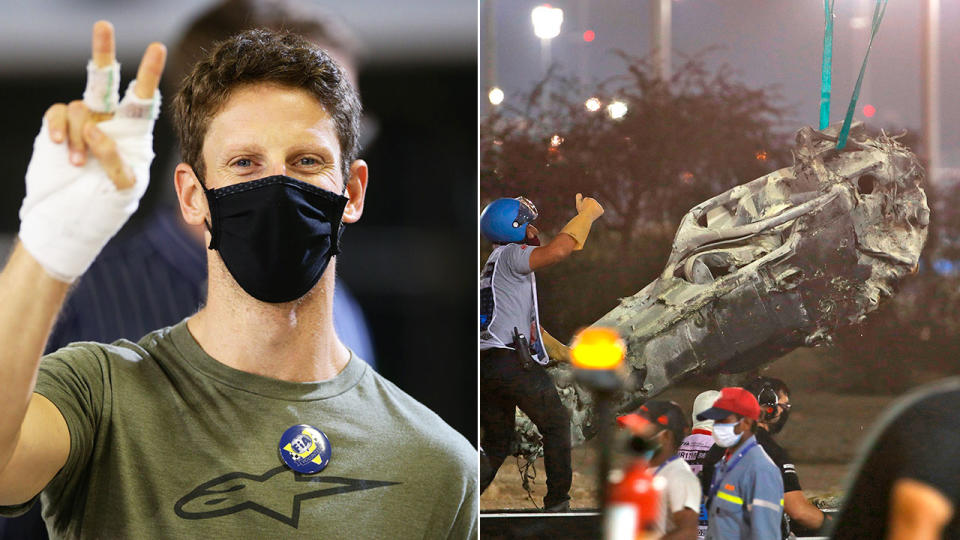Formula One makes major changes after Romain Grosjean crash

Formula One has ushered in a raft of changes in the wake of Romain Grosjean’s lucky escape from a terrifying fireball crash.
Grosjean’s car split in two and burst into flames after smashing through a guard rail on the opening lap of the Bahrain Grand Prix last weekend.
RIGHT ON: Ricciardo vindicated by message from Grosjean's wife
HEARTBREAKING: Mick Schumacher's tribute to father
BRUTAL: Schumacher twist in Lewis Hamilton virus drama
The 34-year-old somehow escaped the inferno with only minor burns to the back of his hands, and has since been released from hospital.
Formula One's governing body has launched an investigation into the frightening incident, with F1 managing director for motorsport Ross Brawn citing a number of issues of particular concern.
Brawn said the most pressing questions related to the safety barrier splitting, as well as the spread and ferocity of the fire from Grosjean's car.
The International Automobile Federation (FIA) also announced on Thursday that it has made changes for this weekend's race at Sakhir, adding two rows of tyres and a conveyor belt at the scene of Grosjean's accident on turn three.
A kerb between turns eight and nine has also been removed to reduce the risk of a car becoming airborne, while the depth of the barrier on the right side of turn nine has been increased to four rows of tyres.
Grosjean suffered burns to his hands after his Haas car split in two, penetrating a metal barrier and erupting in flames, in Sunday's race.
The French driver hailed those who helped him escape the fireball, posting a video message on Instagram after leaving hospital on Wednesday.
Driver praises ‘heroes’ who saved him
Grosjean highlighted the professionalism of the marshal with the extinguisher and FIA doctor Ian Roberts.
"I told him he was a hero, he went into the fire as much as he could to save me," he said of Roberts.
"I felt Ian's hands pulling me over the barrier and knew I was safe. I remember every second of it and life will never be the same again, but I'm sure for the best," added the driver.
"I met with death and that is the worst feeling I ever had. But I'm alive and will enjoy every second of life and every small win in a much better way from now on."
The FIA expected its investigation to take six to eight weeks. It will look at all safety devices, how the safety barrier performed and the role of track marshals and medical intervention team.
The body said it would work with Formula One, Haas and the Grand Prix Drivers' Association (GPDA), who had already been contacted for input. Grosjean is one of the three GPDA directors.
Researchers also have data from a driver-facing high speed camera, the in-car Accident Data Recorder and in-ear accelerometers that measure head movement.
The FIA said immediately after Sunday's accident that the impact measured more than 50G, while Haas said the car's last recorded speed was 221kph.
"With so much data available in Formula One, it allows us to accurately determine every element of what occurred and this work has already begun," said FIA safety director Adam Baker.
"We take this research very seriously and will follow a rigorous process to find out exactly what happened before proposing potential improvements."
with AAP
Click here to sign up to our newsletter for all the latest and breaking stories from Australia and around the world.
